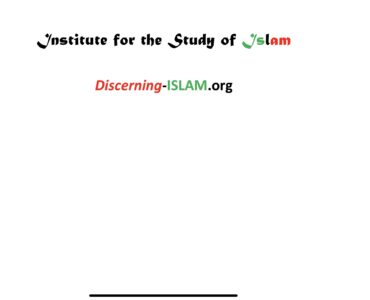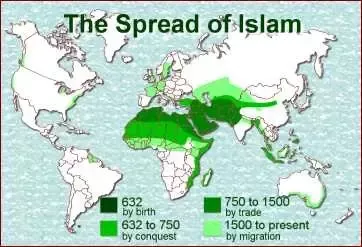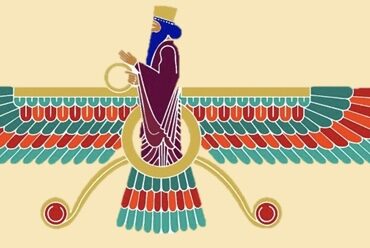
Druze Faith
Druze, or Druse, is a monotheistic religion found in Syria, Lebanon, Israel and Jordan. Representation ranges from 100,000 in Israel, to 700,000 in Syria. Developing from Isma’ilite teachings, Druze incorporates Jewish, Christian, Gnostic, Neoplatonic and Iranian elements.

Jethro shrine and temple of Druze in Hittin, northern Israel
The Druze are an Arabic-speaking esoteric ethnoreligious group, originating in Southwestern Asia, who self-identify as unitarians (Al-Muwaḥḥidūn/Muwahhidun). Jethro of Midian is considered an ancestor of all Druze and revered as their spiritual founder as well as chief prophet.
The Druze faith is a monotheistic and Abrahamic religion based on the teachings of Hamza ibn-‘Ali, al-Hakim, Plato, Aristotle, Socrates and Akhenaten. The Epistles of Wisdom is the foundational text of the Druze faith. The Druze faith incorporates elements of Ismailism, Judaism, Christianity, Gnosticism, Neoplatonism, Pythagoreanism, Hinduism according to some, and other philosophies and beliefs, creating a distinct and secretive theology known to esoterically interpret religious scriptures and to highlight the role of the mind and truthfulness. The Druze follow theophany, and believe in reincarnation or the transmigration of< the soul. At the end of the cycle of rebirth, which is achieved through successive reincarnations, the soul is united with the Cosmic Mind (Al Aaqal Al Kulli).
Although dwarfed by other, larger communities, the Druze community played an important role in shaping the history of the Levant, and continues to play a large political role there. As an ethnic and religious minority in every country in which they live, they have frequently experienced persecution. Even though the faith originally developed out of Ismaili Islam, Druze are often not considered Muslims. Fatimid Caliph Ali az-Zahir, whose father al-Hakim is a key figure in the Druze faith, was particularly harsh, causing the death of many Druze in Antioch, Aleppo, and northern Syria. Persecution flared up during the rule of the Mamluks and Ottomans. Most recently, Druze were targeted by the Islamic State of Iraq and the Levant and Al-Qaeda in order to cleanse Syria and neighboring countries of non-Islamic influence.
The Druze faith is one of the major religious groups in the Levant, with between 800,000 and two million adherents. They are found primarily in Syria, Lebanon and Israel, with small communities in Jordan and outside Southwestern Asia. The oldest and most densely-populated Druze communities exist in Mount Lebanon and in the south of Syria around Jabal al-Druze (literally the “Mountain of the Druzes”). The Druze’s social customs differ markedly from those of Muslims or Christians, and they are known to form a close-knit, cohesive community but also integrate fully in their adopted homelands.
Location
The Institute of Druze Studies estimates that forty to fifty percent of Druze live in Syria, thirty to forty percent in Lebanon, six to seven percent in Israel, and one or two percent in Jordan. About two percent of the Druze population are also scattered within other countries in the Middle East.
Large communities of Druze also live outside the Middle East, in Australia, Canada, Europe, Latin America, the United States, and West Africa. They use the Arabic language and follow a social pattern very similar to those of the other peoples of the Levant (eastern Mediterranean).
The number of Druze people worldwide is between 800,000 and two million, with the vast majority residing in the Levant.
Early History
The 2Druze faith began as a movement in Ismailism that was heavily influenced by Greek philosophyand Gnosticism and opposed certain religious and philosophical ideologies that were present during that epoch.
The faith was preached by Hamza ibn ‘Alī ibn Ahmad, an Ismaili mystic and scholar. He came to Egypt in 1014 and assembled a group of scholars and leaders from across the world to establish the Unitarian movement. The order’s meetings were held in the Raydan Mosque, near the Al-Hakim Mosque.
In 1017, Hamza officially revealed the Druze faith and began to preach the Unitarian doctrine. Hamza gained the support of the Fātimid caliph al-Hakim, who issued a decree promoting religious freedom prior to the declaration of the divine call.
Al-Hakim became a central figure in the Druze faith even though his own religious position was disputed among scholars. John Esposito states that al-Hakim believed that “he was not only the divinely appointed religio-political leader but also the cosmic intellect linking God with creation,” while others like Nissim Dana and Mordechai Nisan state that he is perceived as the manifestation and the reincarnation of God or presumably the image of God.
Some Druze and non-Druze scholars like Samy Swayd and Sami Makarem state that this confusion is due to confusion about the role of the early preacher ad-Darazi, whose teachings the Druze rejected as heretical. These sources assert that al-Hakim rejected ad-Darazi’s claims of divinity, and ordered the elimination of his movement while supporting that of Hamza ibn Ali.
Al-Hakim disappeared one night while out on his evening ride – presumably assassinated, perhaps at the behest of his formidable elder sister Sitt al-Mulk. The Druze believe he went into Occultation with Hamza ibn Ali and three other prominent preachers, leaving the care of the “Unitarian missionary movement” to a new leader, Al-Muqtana Baha’uddin (also spelled Baha’ ad-Din).
Closing Of The Faith
Al-Hakim was replaced by his underage son, ‘Alī az-Zahir. The Unitarian Druze movement, which existed in the Fatimid Caliphate, acknowledged az-Zahir as the caliph, but followed Hamzah as its Imam. The young caliph’s regent, Sitt al-Mulk, ordered the army to destroy the movement in 1021. At the same time, Bahā’a ad-Dīn as-Samuki was assigned the leadership of the Unitarian Movement by Hamza Bin Ali.
For the next seven years, the Druze faced extreme persecution by the new caliph, al-Zahir, who wanted to eradicate the faith. This was the result of a power struggle inside of the Fatimid empire in which the Druze were viewed with suspicion because of their refusal to recognize the new caliph, Ali az-Zahir, as their Imam. Many spies, mainly the followers of Ad-Darazi, joined the Unitarian movement in order to infiltrate the Druze community. The spies set about agitating trouble and soiling the reputation of the Druze. This resulted in friction with the new caliph who clashed militarily with the Druze community. The clashes ranged from Antioch to Alexandria, where tens of thousands of Druze were slaughtered by the Fatimid army. The largest massacre was at Antioch, where 5,000 Druze religious leaders were killed, followed by that of Aleppo. As a result, the faith went underground in hope of survival, as those captured were either forced to renounce their faith or be killed. Druze survivors “were found principally in southern Lebanon and Syria.” In 1038, two years after the death of al-Zahir, the Druze movement was able to resume because the new leadership that replaced him had friendly political ties with at least one prominent Druze leader.
In 1043 Baha’ ad-Din declared that the sect would no longer accept new pledges, and since that time proselytization has been prohibited.
During The Crusades
It was during the period of Crusader rule in Syria (1099–1291) that the Druze first emerged into the full light of history in the Gharb region of the Chouf Mountains. As powerful warriors serving the Muslim rulers of Damascus against the Crusades, the Druze were given the task of keeping watch over the crusaders in the seaport of Beirut, with the aim of preventing them from making any encroachments inland. Subsequently, the Druze chiefs of the Gharb placed their considerable military experience at the disposal of the Mamluk rulers of Egypt (1250–1516); first, to assist them in putting an end to what remained of Crusader rule in coastal Syria, and later to help them safeguard the Syrian coast against Crusader retaliation by sea.
In the early period of the Crusader era, the Druze feudal power was in the hands of two families, the Tanukhs and the Arslans. From their fortresses in the Gharb area (now in Aley District) of southern Mount Lebanon Governorate, the Tanukhs led their incursions into the Phoenician coast and finally succeeded in holding Beirut and the marine plain against the Franks. Because of their fierce battles with the Crusaders, the Druzes earned the respect of the Sunni Muslim caliphs and thus gained important political powers. After the middle of the twelfth century, the Masan family superseded the Tanukhs in Druze leadership. The origin of the family goes back to a Prince Ma’an who made his appearance in the Lebanon in the days of the ‘Abbasid caliph al-Mustarshid (1118–35 AD). The Ma’ans chose for their abode the Chouf District in south-western Lebanon (southern Mount Lebanon Governorate), overlooking the maritime plain between Beirut and Sidon, and made their headquarters in Baaqlin, which is still a leading Druze village. They were invested with feudal authority by Sultan Nur adm
Modern History
In Lebanon, Syria, Israel and Jordan, the Druze have official recognition as a separate religious community with its own religious court system.
Druze are known for their loyalty to the countries they reside in, though they have a strong community feeling, in which they identify themselves as related even across borders of countries.
Despite their practice of blending with dominant groups to avoid persecution, and because the Druze religion does not endorse separatist sentiments but urges blending with the communities they reside in, the Druze have had a history of resistance to occupying powers, and they have at times enjoyed more freedom than most other groups living in the Levant.
Beliefs
God
The Druze conception of the deity is declared by them to be one of strict and uncompromising unity. The main Druze doctrine states that God is both transcendent and immanent, in which he is above all attributes but at the same time he is present.
In their desire to maintain a rigid confession of unity, they stripped from God all attributes (tanzīh). In God, there are no attributes distinct from his essence. He is wise, mighty, and just, not by wisdom, might and justice, but by his own essence. God is “the whole of existence,” rather than “above existence” or on his throne, which would make him “limited.” There is neither “how,” “when,” nor “where” about him; he is incomprehensible.
In this dogma, they are similar to the semi-philosophical, semi-religious body which flourished under Al-Ma’mun and was known by the name of Mu’tazila and the fraternal order of the Brethren of Purity (Ikhwan al-Ṣafa).
Unlike the Mu’tazila, however, and similar to some branches of Sufism, the Druze believe in the concept of Tajalli (meaning “theophany”). Tajalli is often misunderstood by scholars and writers and is usually confused with the concept of incarnation.
Incarnation is the core spiritual beliefs in the Druze and some other intellectual and spiritual traditions. In a mystical sense, it refers to the light of God experienced by certain mystics who have reached a high level of purity in their spiritual journey. Thus, God is perceived as the Lahut [the divine] who manifests His Light in the Station (Maqaam) of the Nasut [material realm] without the Nasut becoming Lahut. This is like one’s image in the mirror: one is in the mirror but does not become the mirror. The Druze manuscripts are emphatic and warn against the belief that the Nasut is God. Neglecting this warning, individual seekers, scholars, and other spectators have considered al-Hakim and other figures divine.
In the Druze scriptural view, Tajalli takes a central stage. One author comments that Tajalli occurs when the seeker’s humanity is annihilated so that divine attributes and light are experienced by the person.
Scriptures
Druze Sacred texts include the Kitab Al Hikma (Epistles of Wisdom). Other ancient Druze writings include the Rasa’il al-Hind (Epistles of India) and the previously lost (or hidden) manuscripts such as al-Munfarid bi-Dhatihi and al-Sharia al-Ruhaniyya as well as others including didactic and polemic treatises.
Reincarnation
Reincarnation is a paramount principle in the Druze faith. Reincarnations occur instantly at one’s death because there is an eternal duality of the body and the soul and it is impossible for the soul to exist without the body. A human soul will only transfer to a human body in contrast to the Hindu and Buddhist belief system where souls can transfer to any living creature. Furthermore, a male Druze can only be reincarnated as another male Druze and a female Druze can only be reincarnated as another female Druze. A Druze cannot be reincarnated in the body of a non-Druze. Additionally, souls cannot be divided and the number of souls existing in the universe is finite. The cycle of rebirth is continuous and the only way to escape is through successive reincarnations. When this occurs, the soul is united with the Cosmic Mind and achieves the ultimate happiness.
Pact of Time Custodian
The Pact of Time Custodian (Mithaq Walley El-Zaman) is considered the entrance to the Druze religion, and they believe that all Druze in their past lives have signed this Charter, and Druze believe that this Charter embodies with human souls after death.
The Druze also use a similar formula, called al-‘ahd, when one is initiated into the ʻUqqāl.
Sanctuaries
The prayer-houses of the Druze are called khalwa or khalwat. The primary sanctuary of the Druze is at Khalwat al-Bayada.
Esotericism
The Druze believe that many teachings given by prophets, religious leaders and holy books have esoteric meanings preserved for those of intellect, in which some teachings are symbolic and allegorical in nature, and divide the understanding of holy books and teachings into three layers.These layers, according to the Druze, are as follows:
- The obvious or exoteric (zahir), accessible to anyone who can read or hear;
- The hidden or esoteric (batin), accessible to those who are willing to search and learn through the concept of exegesis;
- And the hidden of the hidden, a concept known as anagoge, inaccessible to all but a few really enlightened individuals who truly understand the nature of the universe.
Druze do not believe that the esoteric meaning abrogates or necessarily abolishes the exoteric one. Hamza bin Ali refutes such claims by stating that if the esoteric interpretation of taharah (purity) is purity of the heart and soul, it doesn’t mean that a person can discard his physical purity, as salat (prayer) is useless if a person is untruthful in his speech and that the esoteric and exoteric meanings complement each other.
Seven Druze Precepts
The Druze follow seven moral precepts or duties that are considered the core of the faith. The Seven Druze precepts are:
* Veracity in speech and the truthfulness of the tongue;
- Protection and mutual aid to the brethren in faith;
- Renunciation of all forms of former worship (specifically, invalid creeds) and false belief;
- Repudiation of the devil (Iblis), and all forces of evil (translated from Arabic Toghyan, meaning “despotism”);
- Confession of God’s unity;
- Acquiescence in God’s acts no matter what they be;
- Absolute submission and resignation to God’s divine will in both secret and public.
Taqiyya
Complicating their identity is the custom of taqiyya—concealing or disguising their beliefs when necessary—that they adopted from Ismailism and the esoteric nature of the faith, in which many teachings are kept secretive. This is done in order to keep the religion from those who are not yet prepared to accept the teachings and therefore could misunderstand it, as well as to protect the community when it is in danger. Druzes tend to follow the dominant religion of the country where they reside. Some claim to be Muslim or Christian in order to avoid persecution; some do not. Druze in different states can have radically different lifestyles.
Other Beliefs
The Druze forbid divorce; circumcision is not necessary; those who purify and perfect their soul ascend to the stars upon death; when al-Hakim returns, all faithful Druze will join him in his march from China and on to conquer the world; apostasy is forbidden; religious services usually take place on Thursday evenings; they follow Sunni Hanafi law on issues which their own faith has no particular ruling; other influential figures of the religion include Plato, Aristotle, Socrates, Alexander the Great and Akhenaten.
Druze Faith
513 – 006
https://discerning-Islam.org
Last Update: 04/2021




